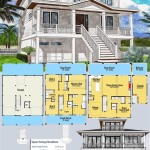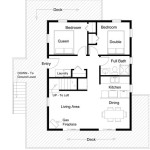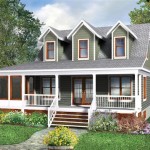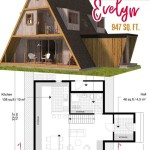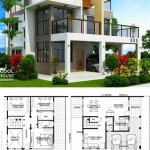Building Your Dream Home: Designing a Custom Home Plan
The prospect of building a custom home is exciting, and one of the initial, crucial steps is developing a home plan. While pre-designed plans offer convenience, crafting custom home plans allows for personalization and tailored functionality. This process enables future homeowners to create a living space perfectly suited to their needs, lifestyle, and budget. This article will explore the key aspects of designing your own home plans, highlighting considerations and resources available to navigate this complex and rewarding journey.
The first step is defining specific needs and wants for the new home. This involves a comprehensive evaluation of current living arrangements, identifying both positive and negative aspects. Elements to consider include the number of bedrooms and bathrooms, desired living and dining spaces, home office requirements, and any specialized spaces like a workshop, home gym, or media room. Lifestyle considerations, such as entertaining habits, hobbies, and family routines, play a significant role in determining the necessary square footage and room layout. Furthermore, future needs should be anticipated. For example, planning for aging in place or adapting to potential family growth can influence design choices.
Conceptualizing the layout is the next stage. This involves sketching out preliminary floor plans, experimenting with space arrangements, and considering the flow of movement between different areas. This initial design phase is critical for establishing the overall home layout. Think about functionality and efficiency. Placing the laundry room near bedrooms or designing a direct entry from the garage into the kitchen can streamline daily routines. Prioritizing natural light and views during this phase can also improve the living experience. Utilize readily available online tools for basic floor plan creation. These tools offer user-friendly interfaces for generating initial layouts. Keep in mind that these are merely starting points; a professional architect or designer should refine any preliminary plans.
Site considerations are also paramount and influence the design dramatically. The location of the property dictates many aspects of the design, including its orientation, foundation type, and potential challenges such as drainage or soil conditions. Factors such as zoning regulations, setback requirements, and building codes need to be investigated before finalizing any plans. Engaging a land surveyor early in the process provides valuable insights regarding property boundaries, topography, and existing utilities. This information is essential for accurately positioning the home on the lot and addressing potential site-related issues. The direction of the sun, prevailing winds, and potential views should also influence the orientation and design of the house, maximizing energy efficiency and aesthetic appeal.
Understanding the Importance of Professional Assistance
While creating preliminary sketches and gathering inspiration can be achieved independently, engaging professionals is essential for translating ideas into buildable and code-compliant home plans. Architects and residential designers possess the expertise to create technically sound drawings that meet all required regulations and provide detailed instructions for construction. They can also offer valuable insights regarding design aesthetics, material selection, and energy efficiency. Their involvement can prevent costly errors and ensure a structurally sound and visually appealing final product. Moreover, these professionals are familiar with local building codes and can facilitate the permitting process, saving time and minimizing potential delays.
Choosing the right professional is crucial. Review portfolios, check references, and interview several candidates to find someone whose design aesthetic aligns with your vision and who possesses a strong understanding of local building practices. It is important to ensure they are licensed and insured to safeguard yourself. A clear and comprehensive contract should outline the scope of work, payment schedule, and intellectual property rights. Open communication and collaboration are key to a successful partnership. Providing the architect or designer with thorough information about your needs, preferences, and budget will enable them to create plans that accurately reflect your vision.
Key Elements of Detailed Home Plans
Complete and detailed home plans encompass various types of drawings and specifications that provide comprehensive instructions for the builder. These drawings typically include site plans, floor plans, elevations, sections, and details. The site plan illustrates the location of the house on the property, indicating setbacks, driveways, landscaping, and utilities. Floor plans show the layout of each level of the house, including room dimensions, door and window locations, and the placement of fixtures and appliances. Elevations depict the exterior views of the house from each side, showcasing the architectural style, materials, and finishes. Sections provide cutaway views of the house, revealing the interior structure and construction details. Detailed drawings illustrate specific features, such as staircases, cabinetry, and trim work.
In addition to architectural drawings, structural drawings are also essential. These drawings are typically prepared by a structural engineer and specify the foundation system, framing system, and other structural components of the house. They ensure that the house is structurally sound and can withstand various loads, such as wind, snow, and seismic activity. Mechanical, electrical, and plumbing (MEP) drawings are also critical. These drawings illustrate the layout of the heating, ventilation, and air conditioning (HVAC) system, electrical system, and plumbing system. They show the location of ductwork, wiring, pipes, fixtures, and equipment. Detailed specifications accompany the drawings, providing information about the materials, finishes, and installation methods to be used.
Accurate and complete home plans are essential for obtaining building permits, securing financing, and ensuring a smooth construction process. They serve as a roadmap for the builder, providing clear instructions and minimizing the potential for errors or misunderstandings. Invest time and resources into producing detailed plans that accurately reflect your vision and comply with all applicable regulations.
Cost Considerations and Budgeting
Designing and building a custom home involves significant financial investments. Establishing a realistic budget early in the process is crucial for avoiding cost overruns and making informed decisions. The cost of designing home plans varies depending on the complexity of the design, the size of the house, and the location. Architects and designers typically charge either an hourly rate or a percentage of the construction cost. Obtaining quotes from multiple professionals and comparing their fees and services is advisable.
Construction costs can vary widely depending on factors such as location, materials, finishes, and labor rates. Researching local building costs and consulting with builders early in the design process can provide insights into potential expenses. Consider factors such as energy efficiency, sustainability, and long-term maintenance costs when making design choices. Investing in energy-efficient windows, insulation, and HVAC systems can reduce utility bills and improve the overall comfort of the home. Selecting durable and low-maintenance materials can minimize future repair and replacement costs.
Contingency funds should be included in the budget to cover unexpected expenses or unforeseen problems that may arise during construction. A contingency of 5% to 10% of the total construction cost is generally recommended. Regular communication with the architect, designer, and builder is essential for monitoring costs and making adjustments as needed. By carefully planning and budgeting, you can manage expenses effectively and ensure that your custom home remains within your financial reach.
Building a custom home is a complex but rewarding process. Designing your own home plans requires careful planning, research, and collaboration with professionals. By defining needs and wants, conceptualizing the layout, considering site conditions, and working with qualified architects and designers, you can create a home that perfectly reflects your vision and meets your lifestyle needs. Detailed and accurate home plans are essential for obtaining building permits, securing financing, and ensuring a smooth construction process. With careful budgeting and cost management, you can bring your dream home to life.

House Plans And Design

House Plans And Design

I Like The Layout Of This House If Have Opportunity To Build My Own Home Is How Want It Be Bed Deck Double Garage Floor Plans

10 Best Tools To Help You Design Your Custom Built House Quality Homes Since 1958

House Plans How To Build A Home Step 3 Armchair Builder Blog Renovate Repair Your Own Save Money As An Owner

Palmer 7851 2439 Sq Ft House Floor Plans Build My Own

House Plans

Build My Own Plan Adelaide Rendition Homes

Atobe Construction Company

Pin By Joanna Howard Williams On Home Design And Decor New House Plans Build My Own

